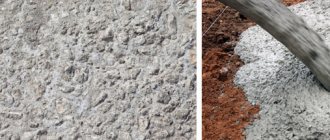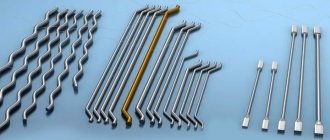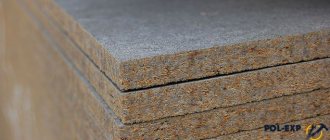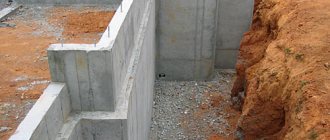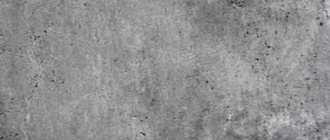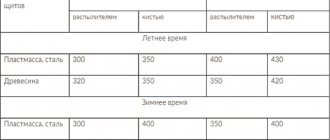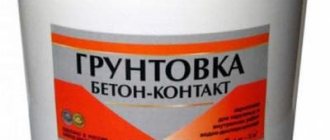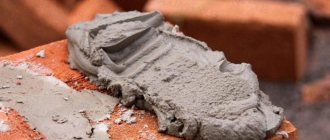The partition is a non-primary wall in the building, so its thickness is thinner. Such secondary structures can be made from various materials.
Gypsum concrete partitions have become very popular. But before installing them, it is necessary to understand the technical features, the composition of this material, and the nuances of installation.
They are used in projects of 2-story houses. Large prefabricated slabs are created using gypsum and other additional fillers. These are what are used for partitions. Typically, such structures are used in houses with wooden or reinforced concrete floors. If the humidity level in the room is high, then use moisture-resistant boards that are treated with water repellents.
Peculiarities
There are many types of designs for interior partitions. It is important to make them technologically correctly in accordance with the requirements that are intended for certain premises. Vertical structures are represented by load-bearing walls and partitions. The former are the support for the floors and roof. Their location in the building is clearly recorded. They are placed on the foundation, and on the second floor - on the lower walls.
But interior partitions are not load-bearing. They are intended to divide the entire internal space of a building into rooms, even in projects of 2-story houses. They are made from both heavy and light materials. Environmental friendliness, sound insulation, appearance and the possibility of redevelopment in the future depend on them. Gypsum concrete partitions have become very popular in recent years. Although they require some experience when installing.
Gypsum concrete partitions: technical characteristics
The requirements for such structures are as follows:
- Strength and stability. Interior partitions in an apartment should not create a danger for people living in the room.
- Long lifespan. It should be equal to the period of operation of the entire building.
- The absence of cracks and other defects on the surface and in those areas where the inter-apartment partition is connected to other structures. This requirement is due to the fact that various rodents and insects do not find places to live, and also that moisture does not accumulate.
What else to consider
In addition, there are special requirements:
- For partitions in bathrooms, resistance to moisture is important. It must not be allowed to enter the structure. The surface must be treated with a waterproof product. For example, they make the cladding with waterproof material.
- For the second floor and attic, partitions that will be installed on wooden beams should be lightweight, since they can withstand less load than reinforced concrete structures.
- The panel partition, which will separate zones with different temperatures inside, must be massive and have a high level of thermal insulation.
- To lay utility lines, stationary partitions with great thickness are used.
Usually, soundproofing of the room is also required. Massive structures cope well with this. Additionally, you can use cladding made of soundproofing materials.
Gypsum concrete: composition
Gypsum concrete means special concrete in which gypsum, rather than traditional cement, is used as a binding component.
Together with sand (or as a replacement for it), various organic and mineral fillers are used:
- Slag. It is a waste product from metal production.
- Ash. It is obtained during the combustion of wood and coal.
- Peat. This is a sedimentary rock with a loose structure.
- Straw. This is an agricultural product.
- Textile rags. In other words, ordinary unnecessary rags.
- Waste paper. Unnecessary paper.
Other organic fillers for gypsum concrete blocks are shavings, sawdust, reeds, cellulose, and waste from hemp and flax processing. Mineral fillers are expanded clay, pumice, agloporite, fuel slag, sand, crushed stone of dolomite, granite, limestone, tuff.
Gypsum concrete: first acquaintance
What is gypsum concrete?
This is the name of concrete in which gypsum is used as a binder instead of traditional cement.
In addition to (and often instead of) sand, various mineral and organic fillers are used:
- Slag is one of the wastes of metallurgical production.
- Ash obtained from burning coal and wood.
- Peat.
- Straw is an agricultural by-product.
- Textile rags (in other words, unnecessary rags).
- Waste paper.
The presence of organic fillers reduces the tensile and compressive strength of the material, but makes it more elastic (in particular, it allows nails to be driven into a partition made of gypsum concrete), improves thermal insulation qualities and resistance to impacts.
However: the most common composition includes, in addition to gypsum, sand and sawdust. It combines sufficient compressive strength with excellent thermal insulation properties and manufacturability.
The density of gypsum concrete is from 1100 to 1500 kg/m3.
Main characteristics of gypsum concrete in comparison with alternative solutions.
What are the consumer properties of this material?
Advantages
- Light weight, allowing the construction of partitions on a wooden floor.
- The heat and sound insulation properties we have already mentioned.
- Ease of processing. If when chiselling main walls, you may need not only a chisel and a hammer, but also cutting reinforced concrete - concrete with diamond wheels, reinforcement - with a regular abrasive - then you can even chisel with a carpenter's chisel and a light hammer. Diamond drilling of holes in concrete also cannot be compared in its labor intensity to drilling gypsum concrete: it takes a regular metal drill.
Due to its low density and absence of solid inclusions, the material is easy to process.
Flaws
There aren't that many of them.
- The ease of machining of the material is the flip side of its limited mechanical strength. Actually, this is why gypsum concrete is not used for the construction of capital walls: its scope of application is limited to unloaded partitions.
- The moisture resistance of the material is low and is due to the corresponding properties of gypsum. Hence the practical conclusion: gypsum concrete is not suitable for partitions in bathrooms and toilets. In any case, it should not be used to build walls that are in direct contact with water.
Prolonged contact with water does not benefit the material. In the photo there is a partition between the bathroom and the kitchen.
Features of the composition
Due to organic fillers, the strength of the material (compressive or tensile) is reduced, but at the same time it becomes much more elastic and resistance to impacts increases. Due to this, it will be possible to drive nails into the gypsum concrete partition. Also, thanks to organic fillers, thermal insulation properties are improved. But at the same time, a composition that contains not only gypsum, but also sand and sawdust is very popular. It is quite durable, technologically advanced, and has excellent thermal insulation characteristics.
The strength of gypsum concrete ranges from 1100 to 1500 kg per cubic meter. m. Moisture absorption ranges from 10 to 25% for material with mineral fillers and up to 65% with organic fillers. As for frost resistance, the latter can withstand up to 5 cycles, and with mineral additives - up to 15.
Finishing
How to finish the finished partition?
The accuracy of the geometric dimensions of the panels allows you to do without plastering the surface, and the porous structure will ensure excellent adhesion of inexpensive gypsum putties. (See also the article Cladding aerated concrete: how to do it.)
Puttying the entire surface is not only necessary, but desirable: it will completely hide the seams and make the partition perfectly smooth, which will be useful for painting or glossy smooth wallpaper.
- The partition is sanded with a hand float or sanding mesh.
- The surface is dusted with a vacuum cleaner or broom and primed with penetrating acrylic primer.
- Universal or finishing gypsum putty is applied in two or three as thin as possible (“scrape off”) layers with intermediate drying.
Puttying walls.
- The surface is re-sanded and primed.
Advantages
The advantages of gypsum concrete partitions include the following:
- Light weight. Thanks to this, partitions made of this material can even be placed on wood floors.
- Good sound and heat insulation characteristics. Thanks to this, the partitions prevent cold and noise from passing through.
- Ease of processing. For example, to chisel main walls you will need a chisel and a hammer. Diamond wheels are used for cutting, and ordinary abrasive is used for reinforcement. But for gypsum concrete structures, just a light hammer and chisel is enough. In addition, drilling holes in regular concrete is much more difficult than drilling gypsum concrete. The first requires diamond-coated bits, while the second requires a regular metal drill. Due to the fact that there are no solid inclusions and the density of the material is low, it is easy to process.
Flaws
But at the same time, gypsum concrete partitions also have disadvantages. These include the following:
- Limited mechanical strength. This is the downside of the ease of processing of this material. It is because of this that it is not used to create permanent walls. As a result, the scope of use of gypsum concrete is limited only to unloaded partitions.
- Low moisture resistance. This is due to the properties of gypsum. Because of this, the material is completely unsuitable for decorating partitions in bathrooms and other rooms with high levels of air humidity. In any case, the material is not used for the construction of walls that come into contact with water.
These nuances must be taken into account before installing gypsum concrete partitions.
Types of gypsum concrete products
Gypsum concrete blocks
Gypsum concrete is used for the production of various products:
- Gypsum concrete panels for partitions. These products are used when air humidity does not exceed 60%. Using the continuous molding method, solid or with a doorway products are made, the dimensions of which correspond to the parameters of the room;
- Partition slabs have a rectangular shape. They can be produced with voids inside or solid.
Hollow slab
- The base of the floor in the form of a gypsum concrete panel is made according to the size of the room with a filler of expanded clay or sawdust. When laying such slabs on concrete floors, soundproofing gaskets are used;
- For mass construction, sanitary slabs are assembled from gypsum concrete slabs, the base of which is a reinforced concrete slab covered with tiles;
Sanitary cabins
- Ventilation blocks are three-dimensional products formed using vertical forms.
Ventilation blocks
As you can see, gypsum concrete is a fairly versatile material. In private construction, partition tongue-and-groove blocks made of gypsum concrete have become especially popular, allowing you to do the work yourself.
What does it include
The key points of such a standard are as follows:
- This regulatory document applies to all panels that are produced using gypsum as a binder component and used in construction. In particular, the document mentions not only gypsum concrete panels, but also gypsum-cement-pozzolanic, gypsum-lime-slag, and gypsum-slag panels.
- If the product does not have an opening, it is marked with the letters “PG”. If a hole is made, then “GGP”. If there is a cutout, then the marking is “PGV”.
- The presence of grooves, boxes for cables, and sockets is not strictly regulated, but is determined only by construction conditions.
- The density of the panels should be in the range of 1100-1500 kg per cubic meter. m. Product humidity is allowed up to 12% for those where the binder is gypsum, and up to 14% for other binder components.
- Panels can be reinforced with wood. Double bars are used to tie around the contour of the product and the openings. The frame is fixed with slats. For reinforcement, coniferous species up to third grade are used. Deciduous trees are also allowed. The exception is birch material, since it is highly susceptible to rotting. But deciduous ones cannot be used for the lower bars of the frame. Wood moisture content should be from 22 to 40%.
- The panels are made with steel mounting loops. They are sealed along the entire height of the structure. The location of the loops is determined by the project. But panels can be made without them at the request of the customer. In this case, a special grip is required to transport them.
- There should be no cracks or chips on the panel material. The only exceptions are superficial ones, whose width is no more than 0.5 mm.
- The panels must only be transported and stored vertically.
Main characteristics of gypsum concrete
Due to the fact that gypsum is used as the main binder in the production of this type of concrete, this concrete is called gypsum concrete, and products made from it are called gypsum concrete blocks or panels.
They are not particularly durable, but they are light in weight and have good heat and sound insulation properties, which is why they are most often used for the construction of internal partitions.
Blocks for partitions
The molding mass in the manufacture of gypsum concrete products is diluted with various aggregates of organic and inorganic origin. This results in lower consumption of the main gypsum binder and reduces the deformation of blocks during drying.
The addition of fillers reduces the mechanical strength of gypsum concrete blocks and slabs, so they are more often used where there is no special load - as a thermal insulation material and internal partition structures.
Organic fillers
Internal non-load-bearing partition made of gypsum concrete slabs
The following substances can be used as internal organic filler:
- Wood shavings;
- Wood wool;
- Sawdust;
- Cellulose;
- Straw;
- Bonfire;
- Peat;
- Straw;
- Reed.
The mechanical strength to compressive loads of gypsum concrete products with organic filler is much lower than that of inorganic ones. However, thermal performance indicators are higher.
When using wool, paper or shavings, elasticity and impact resistance are significantly increased. Such products take much longer to dry and do not have soundproofing qualities suitable for the construction of interior partitions.
This is what wood wool looks like
Inorganic fillers
Blocks with inorganic fillers are more durable:
- Sand;
- Ash;
- Slag;
- Pumice;
- Tuff;
- Expanded clay crushed stone;
- Expanded clay gravel.
Expanded clay granules
The physical and mechanical properties of such gypsum concrete products are higher. The use of inorganic fillers slightly reduces their mechanical strength and increases the weather-resistant qualities of gypsum concrete.
When using crushed stone or gravel as a filler, you can get fragile products with low heat-shielding properties, therefore, for the manufacture of gypsum concrete blocks and panels, fillers are used that have a rough surface, with which the adhesion of the gypsum binder is better - these are slag, pumice, tuff, expanded clay.
- Fuel slag for the production of high-quality gypsum concrete products must not contain impurities (earth, stones, wood chips, unslaked lime) and be clean. Unburned coal particles should not exceed 20% of the slag volume. Before using the slag for the production of gypsum concrete, it is kept in the open air for 2 months or more.
Fuel slag
The size of the filler particles depends on the dimensions of the product being manufactured. The main condition is that the solution must completely envelop the fragments of the substance.
When preparing the slag, dust and particles less than 2 mm containing unburned coal particles are removed from it. The condition is taken into account that the number of small slag particles smaller than 5 mm should not exceed 30% of the total volume of the filler;
- Gypsum concrete products of high quality are obtained by using a filler such as pumice.
Pumice
The thermal insulation qualities of gypsum concrete are increased due to the high porosity of the filler, and the absence of harmful impurities positions gypsum concrete as an environmentally friendly material;
- When adding volcanic tuff filler, gypsum concrete products acquire a higher volumetric weight.
Volcanic tuff
The approximate composition of gypsum concrete is shown in the table in the photo below.
Composition of gypsum concrete
The production of gypsum concrete products occurs using the molding method.
Production of gypsum concrete panels
The consistency of the mass used for the production of gypsum concrete products can be:
- Liquid;
- Tough;
- Semi-rigid.
Molding of products can occur in various ways:
- The casting method is typical for products consisting of pure gypsum material of liquid consistency. Its distinctive feature is high productivity and low labor intensity;
Installation for the production of tongue-and-groove blocks by casting
- The vibration molding method is based on rigid and semi-rigid pure gypsum masses or those with slag filler. This method is the most economical, since there is an economical consumption of the binder, and its drying requires less fuel consumption;
- The compression molding method is characterized by the use of a mass containing a small amount of moisture in its composition;
- The thromboming method makes it possible to produce stronger gypsum concrete products than with the casting method.
Installation for the production of gypsum concrete products, where 1 is a device for dosing, 2 is a mixer for gypsum concrete; 3 – receiving surface; 4 – rolling mill; 5 – installation for waste removal, 6 – overrunning roller table, 7 – table for tilting products
Regardless of the composition of the gypsum mass - whether it has fillers or not, the main technological condition is thorough mixing of all its components with water.
- During this process, gypsum particles are abundantly wetted with water, increasing their hydration (the process of adding water molecules to molecules of a second substance), which improves the quality of enveloping the filler granules with a binder.
- It is also an indispensable condition that after the gypsum sets when vibration or pressing is used, no loss of bonds occurs and the strength of the manufactured product does not drop, therefore the plasticity index of the mass must be sufficient at all stages of production.
- The acceleration of the production process of blocks and panels is influenced by the rapid release of the molding equipment from the finished product, and this is possible if it dries quickly. To achieve this, special additives are added to the gypsum mass.
During the manufacture of metal-reinforced gypsum concrete products, the internal reinforcement must be treated with anti-corrosion compounds, for example, bitumen varnish. Also, reinforcement of large-format panels can be done with a wooden frame made from coniferous wood (usually pine).
Technical and economic indicators
The use of gypsum concrete products in construction has proven itself economically. If we compare the cost of erecting brick walls and gypsum concrete panels, the latter will be 2 times cheaper. Their weight will be 2.5 times lower, and the thermal resistance will be 2 times better.
Due to the specific application of the products, the need for labor on the construction site is reduced by 5 times.
Characteristics of gypsum concrete with organic fillers
Full labeling
Includes the following:
- Panel type - PG, PGP or PGV.
- Slab dimensions. Write length, height. Designated in decimeters. If necessary, round to whole numbers. The thickness is also recorded, but in centimeters.
- Brand of concrete. It determines the compressive strength of a material.
- A complete list of binding components: G - gypsum, GI - gypsum-lime-slag, GSH - gypsum-slag, GC - gypsum-cement-pozzolan.
Groups of symbols are written through a hyphen.
Production technology
Internal gypsum concrete partitions are erected using two methods. Firstly, they pour it into the formwork. This method is used very rarely. Secondly, you can assemble from already made panels. This option is more common.
The most popular panels in residential construction are those made from gypsum, sawdust and sand, taken in equal parts. The production method is continuous molding on a rolling machine. This assumes the following:
- The necessary ingredients are poured into the mixing container in doses. There they are converted into a homogeneous dried mass.
- Water and a special agent are added to slow down the setting process of the gypsum. Animal glue is usually used.
- Pre-made frames are placed on the machine belt. The gypsum concrete substance is poured directly there through a dispenser, and then distributed evenly.
- The formed and fixed mass enters the department where the panel is dried. There it has contact with flue gases and air with a temperature of 130 °C for 24 hours.
- Finished and dried panels are transported to a warehouse for storage.
Typically partitions are made of gypsum concrete and are 80-100 mm thick. Between the apartments they make double ones, where there is an air gap of 50 mm.
Production
Internal partitions from the material we are discussing can be erected in two ways:
- Pouring into formwork. This method, however, is practiced extremely rarely.
- Assembly from ready-made panels.
According to what regulatory documents and how are gypsum concrete panels for partitions produced?
Standard
Production and standardized product quality are regulated by GOST 9574-90, adopted at the end of the Soviet era.
It’s curious: in the header the document is positioned as a state standard of the USSR; however, it was adopted in January 1992, when the Soviet Union had already collapsed.
Let's explore the key points of the standard.
- The regulatory document applies to all panels produced using a gypsum binder for construction needs. In particular, its text mentions gypsum-slag, gypsum-lime-slag and gypsum-cement-pozzolanic panels.
Several options for the composition of gypsum concrete.
- Products without openings are marked with the letters PG. Panels with openings are designated by the GGP index, and with cutouts - PGV.
Three versions of PG panels.
- The presence of grooves, grooves and boxes for wiring and sockets is determined solely by construction conditions and is not strictly regulated.
- Full product labeling contains the following sections: Panel type (PG, PGP or PGV).
- Its overall dimensions: length and height in decimeters, rounded to the nearest whole number, as well as thickness in centimeters.
- A hyphen separating groups of symbols.
- Concrete grade (its compressive strength).
- Full description of the binder (G - gypsum, GS - gypsum-slag, GI - gypsum-lime-slag, GC - gypsum-cement-pozzolan).
Thus, a product marked PG60.27.8-50G is a panel without openings and cutouts with dimensions of 6x2.7x0.08 meters based on a gypsum binder, with a compressive strength of 50 kgf/cm2.
Please note: 50 kgf/cm2 is the minimum compressive strength value allowed for gypsum concrete.
- We already know the dry density of the panels - from 1100 to 1500 kg/m3. The permissible humidity range is up to 12% for products with gypsum binder and up to 14% for other binders.
- Wood is used to reinforce the panels. Paired bars tie the contour of the panel itself and the openings or cutouts in it; slats connect the contour frame.
- For the manufacture of reinforcement, it is strongly recommended to use coniferous wood up to grade 3 inclusive. It is allowed to remove the bark from the wane (it must face the inside of the panel) and splice one of the paired frame bars; in this case, the number of splices on each side of the panel should not be more than two.
Frame assembly diagram.
It is also possible to use deciduous wood (except for birch: with high hardness, its wood is too susceptible to rot) everywhere except for the lower beams of the trim. Wood moisture content should be in the range of 22 - 40 percent.
- The panels are equipped with steel mounting loops, which are sealed to the entire height of the product. The location of the hinges is agreed upon for a specific project in the working drawings.
However: by agreement with the customer, panels can be produced without hinges. In this case, they require the use of special grips to move them.
1 - frame. 2 - doorway. 3 — steel mounting loops.
- The panel material must be free of cracks (except for superficial ones, no more than half a millimeter wide). No more than 2 shells per square meter of surface are allowed with their diameter or largest size up to 20 mm.
- The panels are stored and transported in a vertical position.
- As already mentioned, gypsum does not do well with high humidity; however, panels made on the basis of the GC (gypsum cement-pozzolanic) binder material can still be used in wet rooms.
In addition to the above, the standard regulates the maximum permissible deviations from specified dimensions and control methods.
Technology
What does the production of gypsum concrete panels look like?
We have already mentioned above that in housing construction the most widely used material is gypsum, sand and sawdust. The proportions of the components are 1:1:1.
Manufacturing method: continuous molding on a rolling mill.
- The components are dosed into the mixing hopper, where they are converted into a homogeneous dry mass.
- Next, water and a gypsum retarder (animal glue) are mixed into them.
- Pre-knocked frames are laid on the rolling mill belt. The gypsum concrete mass is fed directly onto them through a slot dispenser and is evenly distributed by calibrating rollers under continuous vibration. The rollers form a layer of the required thickness.
- The formed and set panel enters the drying chamber, where it is in contact with air or flue gases at a temperature of 130 degrees during the day.
- After drying, the finished products are sent to the warehouse.
Diagram of a production line producing panels.
The thickness of gypsum concrete partitions is usually 80 or 100 millimeters; inter-apartment walls are built as double walls, with an air gap 50 millimeters thick.
Installation
If you install partitions yourself, then use slabs whose dimensions are small.
Structures with an area of several square meters are installed only at the construction stage, before the floor slabs and roof are fixed. The instructions here are as follows:
- If necessary, level the base with a cement pad.
- Waterproof the concrete from the future partition with 2 layers of roofing material.
- Place orders along the edges of the partition. These are vertically positioned slats that have marks that correspond to the rows of panels. Then you need to tighten the mooring. This is a horizontal cord.
- Install the first row of panels dry.
- Prepare a binder for seams. Plaster is used, to which an agent is added that slows down its drying. To fill the seams, you can use ready-made gypsum plaster or mix it with alabaster. In the latter option, the cost of 1 kg of solution will be less. But you will have to spend time experimenting with choosing the optimal ratio for setting the material.
- Fill the vertical joints with a binder solution. Install fittings. Make 2 holes in the place of the upper horizontal groove in the wall. Drive in pieces of reinforcement there. Attach several pieces of reinforcement to them, securing them with wire.
- Place plaster mortar on top of the groove. Install the next row of panels on it. Be sure to retie vertical seams. From row to row they should shift by about a quarter of their length.
The next rows should be laid out in the same way.
To cut gypsum concrete, experts advise using a grinder with a regular stone cutting wheel. A circular saw or jigsaw will also work. But they quickly become dull.
Gypsum concrete partitions: material and construction technology
What does the installation of gypsum concrete partitions from ready-made panels look like? How and according to what regulatory documents are these panels produced? How to finish a gypsum concrete partition? Let's figure it out.
Structure and appearance of the partition.
Gypsum concrete: first acquaintance
What is gypsum concrete?
This is the name of concrete in which gypsum is used as a binder instead of traditional cement.
In addition to (and often instead of) sand, various mineral and organic fillers are used:
- Slag is one of the wastes of metallurgical production.
- Ash obtained from burning coal and wood.
- Peat.
- Straw is an agricultural by-product.
- Textile rags (in other words, unnecessary rags).
- Waste paper.
The presence of organic fillers reduces the tensile and compressive strength of the material, but makes it more elastic (in particular, it allows nails to be driven into a partition made of gypsum concrete), improves thermal insulation qualities and resistance to impacts.
However: the most common composition includes, in addition to gypsum, sand and sawdust. It combines sufficient compressive strength with excellent thermal insulation properties and manufacturability.
The density of gypsum concrete is from 1100 to 1500 kg/m3.
Main characteristics of gypsum concrete in comparison with alternative solutions.
What are the consumer properties of this material?
Advantages
- Light weight, allowing the construction of partitions on a wooden floor.
- The heat and sound insulation properties we have already mentioned.
- Ease of processing. If when chiselling main walls, you may need not only a chisel and a hammer, but also cutting reinforced concrete - concrete with diamond wheels, reinforcement - with a regular abrasive - then you can even chisel with a carpenter's chisel and a light hammer. Diamond drilling of holes in concrete also cannot be compared in its labor intensity to drilling gypsum concrete: it takes a regular metal drill.
Due to its low density and absence of solid inclusions, the material is easy to process.
Flaws
There aren't that many of them.
- The ease of machining of the material is the flip side of its limited mechanical strength. Actually, this is why gypsum concrete is not used for the construction of capital walls: its scope of application is limited to unloaded partitions.
- The moisture resistance of the material is low and is due to the corresponding properties of gypsum. Hence the practical conclusion: gypsum concrete is not suitable for partitions in bathrooms and toilets. In any case, it should not be used to build walls that are in direct contact with water.
Prolonged contact with water does not benefit the material. In the photo there is a partition between the bathroom and the kitchen.
Production
Internal partitions from the material we are discussing can be erected in two ways:
- Pouring into formwork. This method, however, is practiced extremely rarely.
- Assembly from ready-made panels.
- The regulatory document applies to all panels produced using a gypsum binder for construction needs. In particular, its text mentions gypsum-slag, gypsum-lime-slag and gypsum-cement-pozzolanic panels.
According to what regulatory documents and how are gypsum concrete panels for partitions produced?
Standard
Production and standardized product quality are regulated by GOST 9574-90, adopted at the end of the Soviet era.
It’s curious: in the header the document is positioned as a state standard of the USSR; however, it was adopted in January 1992, when the Soviet Union had already collapsed.
Let's explore the key points of the standard.
Several options for the composition of gypsum concrete.
- Products without openings are marked with the letters PG. Panels with openings are designated by the GGP index, and with cutouts - PGV.
Three versions of PG panels.
- The presence of grooves, grooves and boxes for wiring and sockets is determined solely by construction conditions and is not strictly regulated.
- Full product labeling contains the following sections: Panel type (PG, PGP or PGV).
- Its overall dimensions: length and height in decimeters, rounded to the nearest whole number, as well as thickness in centimeters.
- A hyphen separating groups of symbols.
- Concrete grade (its compressive strength).
- Full description of the binder (G - gypsum, GS - gypsum-slag, GI - gypsum-lime-slag, GC - gypsum-cement-pozzolan).
Thus, a product marked PG60.27.8-50G is a panel without openings and cutouts with dimensions of 6x2.7x0.08 meters based on a gypsum binder, with a compressive strength of 50 kgf/cm2.
Please note: 50 kgf/cm2 is the minimum compressive strength value allowed for gypsum concrete.
- We already know the dry density of the panels - from 1100 to 1500 kg/m3. The permissible humidity range is up to 12% for products with gypsum binder and up to 14% for other binders.
- Wood is used to reinforce the panels. Paired bars tie the contour of the panel itself and the openings or cutouts in it; slats connect the contour frame.
- For the manufacture of reinforcement, it is strongly recommended to use coniferous wood up to grade 3 inclusive. It is allowed to remove the bark from the wane (it must face the inside of the panel) and splice one of the paired frame bars; in this case, the number of splices on each side of the panel should not be more than two.
Frame assembly diagram.
It is also possible to use deciduous wood (except for birch: with high hardness, its wood is too susceptible to rot) everywhere except for the lower beams of the trim. Wood moisture content should be in the range of 22 - 40 percent.
- The panels are equipped with steel mounting loops, which are sealed to the entire height of the product. The location of the hinges is agreed upon for a specific project in the working drawings.
However: by agreement with the customer, panels can be produced without hinges. In this case, they require the use of special grips to move them.
1 - frame. 2 - doorway. 3 — steel mounting loops.
- The panel material must be free of cracks (except for superficial ones, no more than half a millimeter wide). No more than 2 shells per square meter of surface are allowed with their diameter or largest size up to 20 mm.
- The panels are stored and transported in a vertical position.
- As already mentioned, gypsum does not do well with high humidity; however, panels made on the basis of the GC (gypsum cement-pozzolanic) binder material can still be used in wet rooms.
In addition to the above, the standard regulates the maximum permissible deviations from specified dimensions and control methods.
Technology
What does the production of gypsum concrete panels look like?
We have already mentioned above that in housing construction the most widely used material is gypsum, sand and sawdust. The proportions of the components are 1:1:1.
Manufacturing method: continuous molding on a rolling mill.
Diagram of a production line producing panels.
The thickness of gypsum concrete partitions is usually 80 or 100 millimeters; inter-apartment walls are built as double walls, with an air gap 50 millimeters thick.
Installation
How to build a plasterboard partition with your own hands? It is clear that in this case it will be necessary to use panels of small dimensions: products with an area of several square meters are installed only at the construction stage, before laying the floor slabs and assembling the roof.
The instructions look something like this:
Useful: to fill the seams, you can use ready-made gypsum plaster or its mixture with alabaster. In the second case, the price per kilogram of solution will be slightly lower; however, you will have to spend some time experimenting to find the optimal ratio that will give the required setting time.
1 - berth. 2 - reinforcement with a diameter of 6-10 millimeters.
The next rows are laid out similarly. The space between the upper cut of the partition and the ceiling is filled with tow with gypsum mortar applied to it. To cut gypsum concrete, the easiest way is to use a grinder with a regular cutting wheel for stone; A circular saw and a jigsaw can also be used, but they quickly become dull.
Several types of panels and methods for installing them.
Finishing
How to finish the finished partition?
The accuracy of the geometric dimensions of the panels allows you to do without plastering the surface, and the porous structure will ensure excellent adhesion of inexpensive gypsum putties. (See also the article Cladding aerated concrete: how to do it.)
Puttying the entire surface is not only necessary, but desirable: it will completely hide the seams and make the partition perfectly smooth, which will be useful for painting or glossy smooth wallpaper.
Puttying walls.
Conclusion
We will consider our acquaintance with the new material successful. As always, the video in this article will offer the reader additional information on the topic we are discussing. Good luck with the renovation!
And how to cut reinforced concrete with diamond wheels, as well as diamond drilling of holes in concrete, watch the video in other articles on this site.
